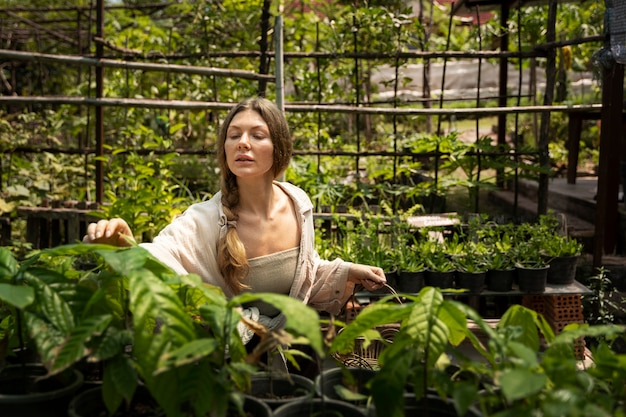Urban Gardening: Growing Green Spaces in the City - A Guide to Sustainable Living
Discover the joy of urban gardening: Growing green spaces in the city brings sustainable living to your doorstep. Learn how to cultivate lush gardens, even in limited urban spaces, and reap the benefits of fresh produce and improved well-being.

Introduction

In the hustle and bustle of urban life, finding solace in nature can seem like a distant dream. However, urban gardening offers a solution by transforming concrete jungles into vibrant green spaces. This guide will delve into the art and science of urban gardening, providing insights into how you can cultivate thriving gardens in the heart of the city.
Embracing Urban Gardening
Urban gardening, also known as urban horticulture, refers to the practice of growing plants, vegetables, and herbs in urban environments. It encompasses a wide range of gardening techniques tailored to suit the unique challenges and opportunities presented by city living.
Understanding the Benefits
Urban gardening offers a multitude of benefits, both for individuals and communities. From improving air quality and reducing urban heat island effects to promoting biodiversity and fostering a sense of community cohesion, the advantages are manifold.
Overcoming Challenges
Despite its numerous benefits, urban gardening comes with its fair share of challenges. Limited space, soil contamination, and environmental pollutants are just a few hurdles that urban gardeners may encounter. However, with creativity and innovation, these challenges can be overcome.
Getting Started with Urban Gardening
Choosing the Right Location
Selecting the optimal location is crucial for the success of your urban garden. Look for areas with ample sunlight, access to water, and protection from harsh winds. Balconies, rooftops, and community gardens are popular choices for urban gardeners.
Selecting Suitable Plants
When it comes to urban gardening, not all plants are created equal. Opt for varieties that thrive in confined spaces and are resilient to environmental stressors. Herbs like basil and mint, leafy greens such as spinach and lettuce, and compact fruits like tomatoes and strawberries are excellent choices for urban gardens.
Maximizing Vertical Space
In densely populated urban areas, vertical gardening is a game-changer. By utilizing walls, trellises, and hanging planters, you can make the most of limited space and create stunning vertical gardens that add visual appeal to your surroundings.
Maintaining Your Urban Garden
Watering Wisely
Proper watering is essential for the health of your urban garden. Be mindful of water usage and opt for drip irrigation systems or self-watering containers to minimize wastage. Monitor soil moisture levels regularly and adjust your watering schedule accordingly.
Nurturing Soil Health
Healthy soil is the foundation of a successful garden. Incorporate organic matter such as compost and mulch to improve soil fertility and structure. Practice crop rotation and companion planting to prevent nutrient depletion and minimize pest infestations.
Frequently Asked Questions (FAQs)
- What are the best plants for urban gardens?
- Urban gardens thrive on resilient plants such as herbs, leafy greens, and compact fruits. Some popular choices include basil, spinach, tomatoes, and strawberries.
- How can I make the most of limited space in my urban garden?
- Vertical gardening techniques, such as using trellises and hanging planters, allow you to maximize space and create lush greenery even in confined areas.
- Is urban gardening suitable for apartment dwellers?
- Absolutely! Apartment balconies and windowsills provide ample opportunities for urban gardening. Container gardening is particularly well-suited to apartment living.
- What are the environmental benefits of urban gardening?
- Urban gardening helps mitigate the urban heat island effect, improve air quality, and promote biodiversity by creating green spaces in densely populated cities.
- How can I deal with soil contamination in urban areas?
- Raised beds filled with clean soil, soil testing, and remediation techniques such as phytoremediation can help mitigate soil contamination in urban gardens.
- What community resources are available for urban gardeners?
- Many cities offer community garden programs, workshops, and online resources to support urban gardeners. Reach out to local gardening clubs and municipal authorities for assistance.
Conclusion
Urban gardening offers a pathway to sustainable living and a deeper connection with nature in the midst of urban landscapes. By embracing innovative gardening techniques and harnessing the power of green spaces, individuals and communities can transform cities into thriving hubs of biodiversity and well-being.
Bold and compelling, urban gardening: Growing green spaces in the city holds the key to a greener, healthier future for urban dwellers worldwide.